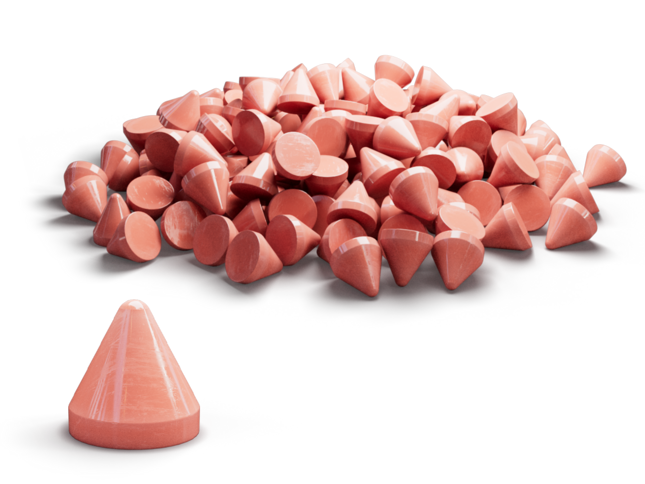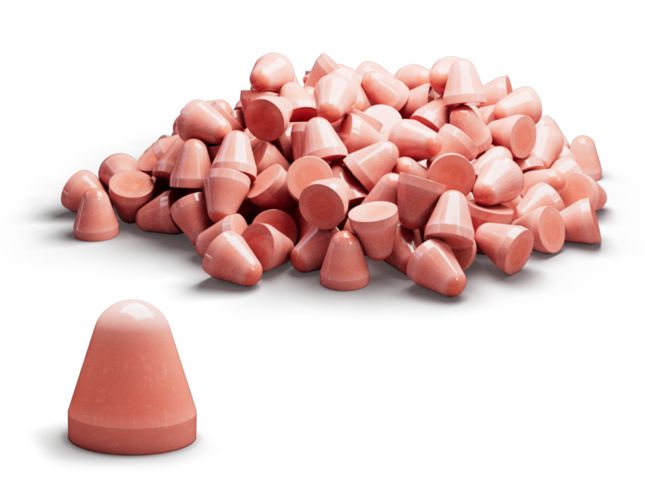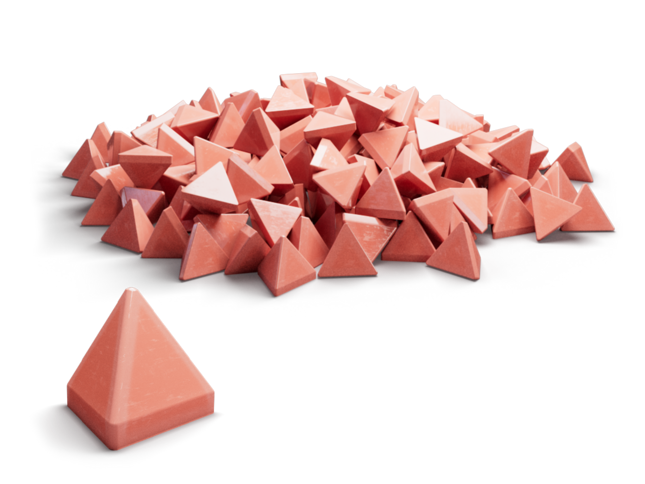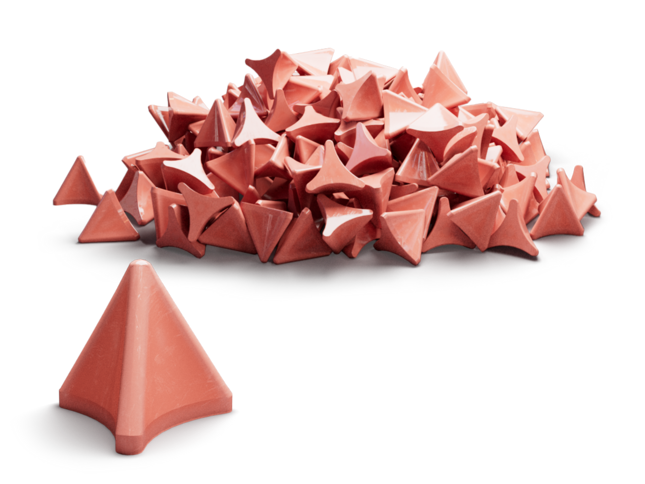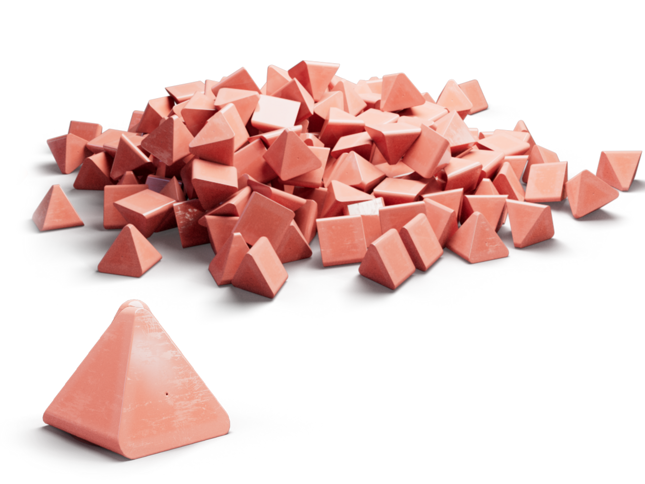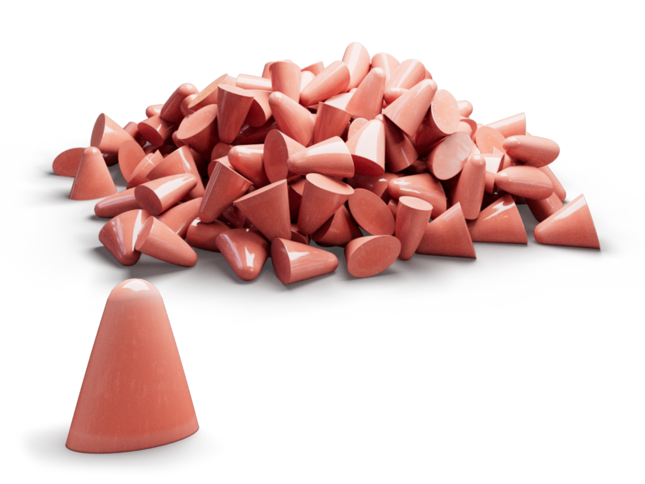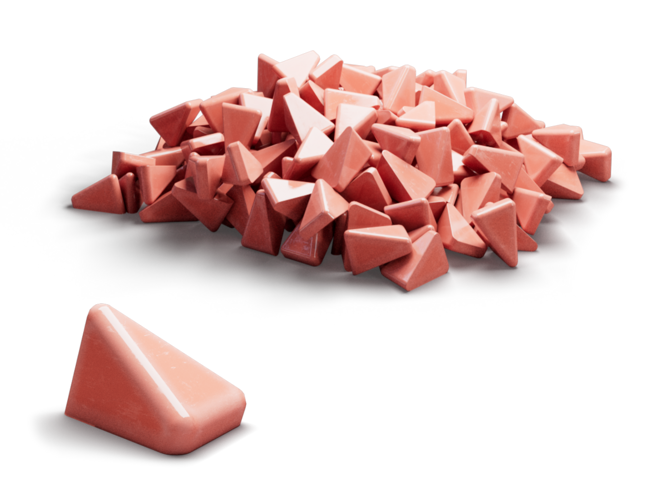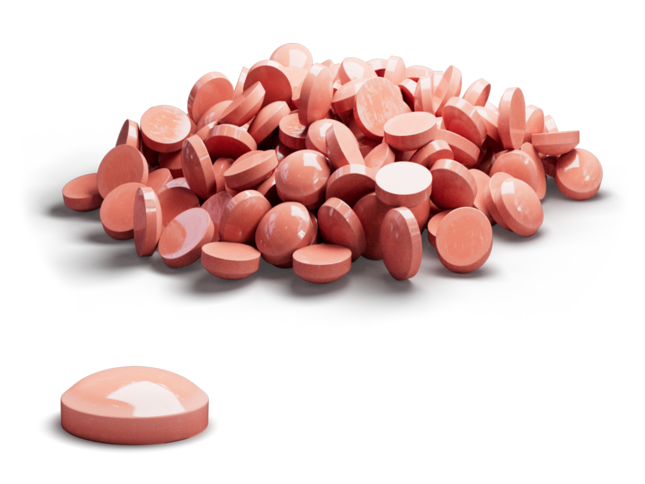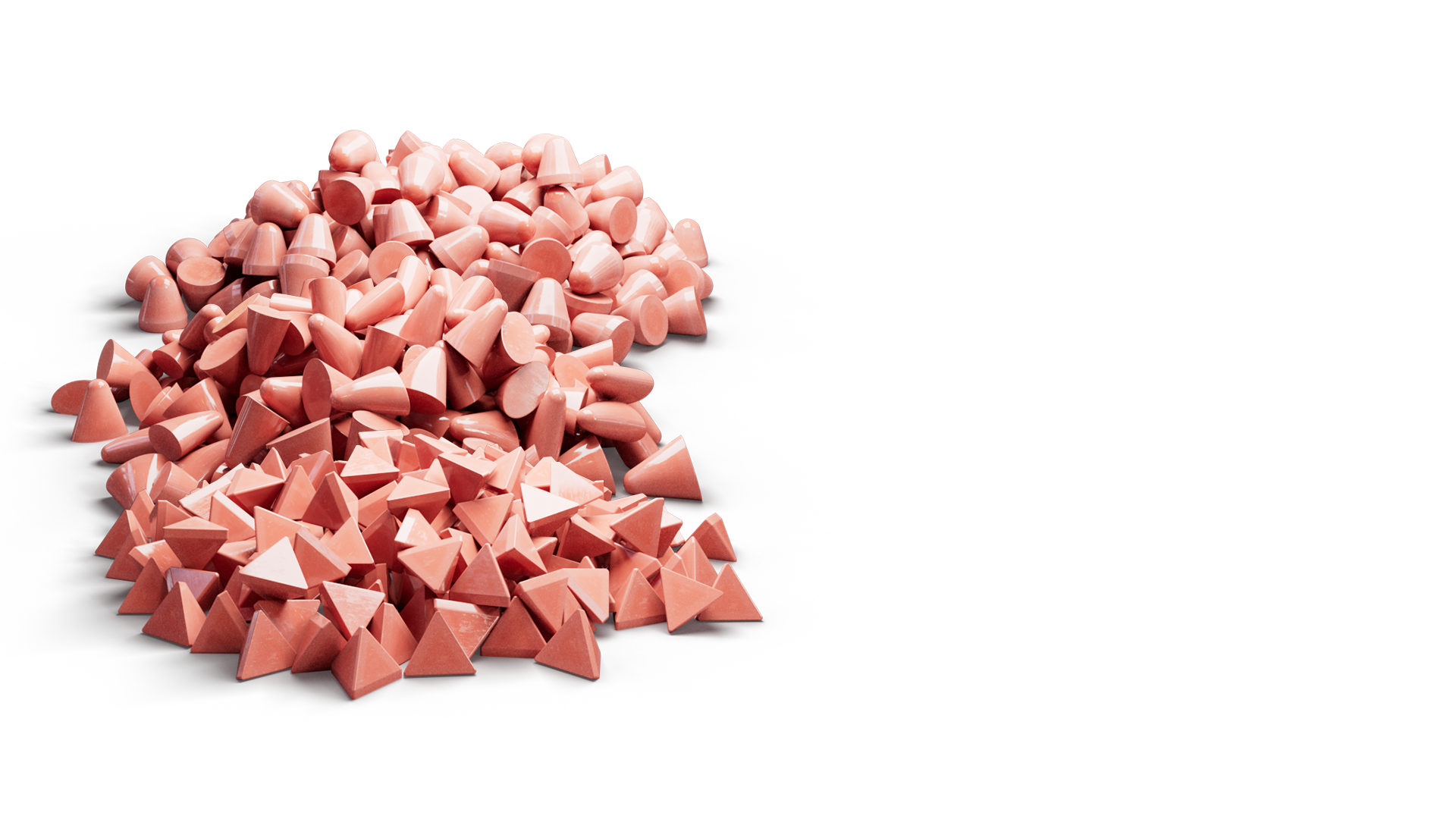
Plastic media
Plastic-bonded finishing media – for gentler surface finishing
For gentler surface finishing of softer materials, plastic finishing media has proven its worth. It is used for the gentle deburring, edge rounding, and grinding of brass, aluminum, and copper.
Plastic-bonded finishing media is about half the weight of its ceramic counterpart. Chipping can be virtually avoided even with high mechanical loads on the media (e.g. in intensive processes with high work piece weights). Even with large media, surface damage to the work piece can be avoided. If media gets lodged in holes or apertures of complex work pieces, these can be more easily identified and removed than the harder ceramic media thanks to the distinctive coloration of the grinding media.
All plastic media manufactured by Rösler goes through various quality-inspection steps in the manufacturing process. These are essential for achieving reliable surface quality in the application. We also pay particular attention to ensuring that there are no fluctuations in the cut rate and stock removal behavior of the finishing media. Of course, we achieve this by carefully selecting raw materials as well as through modern and efficient system technology and special curing cycle downstream of the actual manufacturing process.
Our variants of efficiency in plastic
N-media
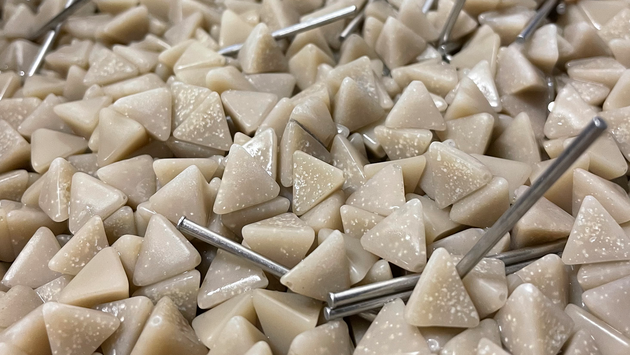
Almost all standard grinding media are also available in our non-foaming “N” version. The non-foaming media achieve higher process stability and reduce contamination on the workpieces and machine. As a result, the grinding effect is optimized, helping to achieve consistent finishing results. This option is not only better for the environment due to using fewer resources (fresh water, compound and process-water cleaner), but it also significantly reduces processing costs.
You want only the best for your surface?
We will gladly help you!

